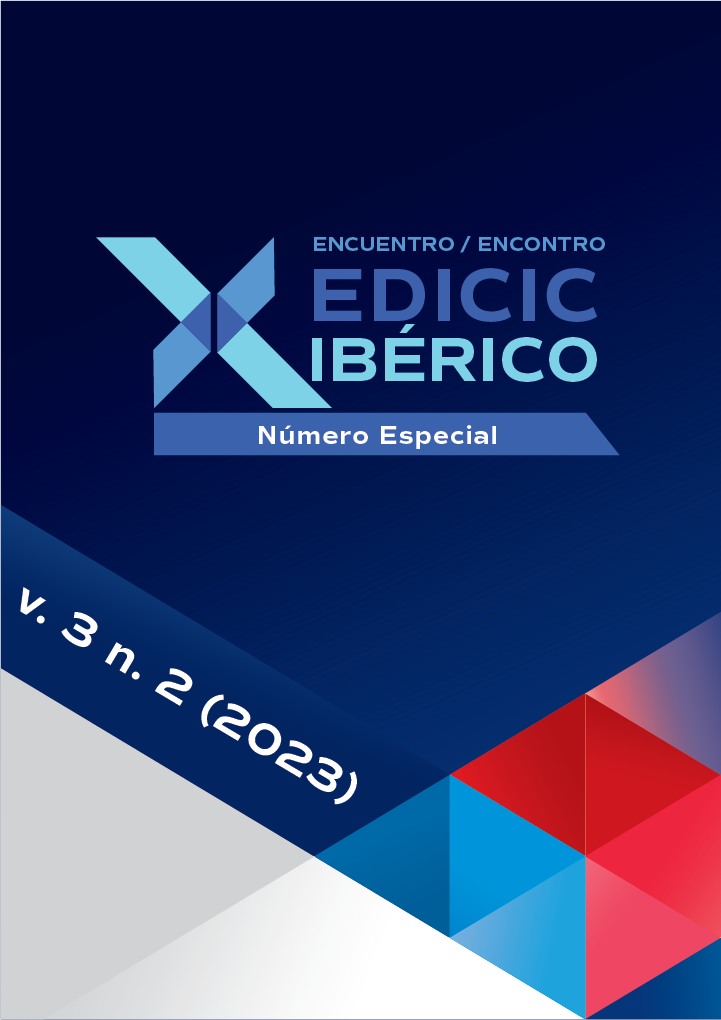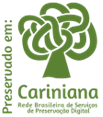A proposal for temporal representation in information systems: application to compulsory education legislation in Portugal (Sec. XVIII-Sec. XX)
DOI:
https://doi.org/10.62758/re.v3i2.203Keywords:
Temporal Information System, Archives, Information Mediation, Information Science, Network ScienceAbstract
It is up to CI to investigate the properties and behavior of information, the forces that govern information flows and its processing, for maximum utilization and use, as well as it is up to CI to import the social and human use of information, in a multidisciplinary, interdisciplinary dialogue and transdisciplinary. Knowledge can be understood as a phenomenon resulting from the accumulation of information within the human mind, enabling the holder to use it in new situations. The present moment results from a series of interactions, from the past and which are linked together like links in a continuous chain. The possibility of building a map or artefact that would allow information from the past to be updated in the present could increase individual and social knowledge. It is also understood that the mediation of information is a historical-social process, as the moment in which it takes place is not a static time frame. This relationship can also be seen in the context of archival mediation. The diachronic arrangement of documents is something underlying the documentary series. The flows of information that began in the past manifest themselves in the present, in a concrete way, although not always recognized, due to the distortion imposed by the limits of our lives. There are recent techniques, based on Network Science, that facilitate the visualization of temporal and systemic evolutionary relationships, which allow us to answer the question that arises: where are the events of the past today? The archive is a witness to the past and the archivist can be, through the construction of this type of artefact, the 'updater' par excellence of the information passed on in the present with the minimum of appropriation and interference. An investigation was designed that will be based on a corpus, based on the collection of Portuguese legislation on compulsory education, from the 18th century to the 20th century, marking the different moments in time and which, as such, will be included in the construction of the system. The aim is to build a temporal information system, a visual map or artefact, based on the documentary series that demonstrates the diachronic evolution of the events described in them. This artefact will seek to substantiate a form of mediation on the part of the archivist, that of an ‘updater’ of past information. The quadripolar method was used to approach the object and in the empirical part the automatic analysis of latent content was used, for the calculation, diploma by diploma, of clusters of quantified semantic meaning. From the quantification, calculated using the R-Iramuteq software (Reinert Method), a visual system will be built, embodied in a 'band graph' that will reflect the flows of temporal information. The method was tested based on three legal diplomas (documents) arranged diachronically, obtaining a map or temporal information system translated into a visual graph that allowed the visualization of the evolution of events over time and, therefore, the feasibility of systematic construction of this type of artifacts.
References
Almeida Junior, O. F. (2009). Mediação da informação e multiplas linguagens. Ciência da Informação, 2(1). https://brapci.inf.br/index.php/res/v/119300
Barreto, A. D. A. (2002). A condição da informação. São Paulo em Perspectiva, 16(3), 67–74. https://doi.org/10.1590/S0102-88392002000300010 DOI: https://doi.org/10.1590/S0102-88392002000300010
Barreto, A. D. A. (2007). Uma história da ciência da informação. Em Para Entender a Ciência da Informação (Vol. 1–1). UFBA.
Boccaletti, S., Bianconi, G., Criado, R., del Genio, C. I., Gómez-Gardeñes, J., Romance, M., Sendiña-Nadal, I., Wang, Z., & Zanin, M. (2014). The structure and dynamics of multilayer networks. Physics Reports, 544(1), 1–122. https://doi.org/10.1016/j.physrep.2014.07.001 DOI: https://doi.org/10.1016/j.physrep.2014.07.001
Borko, H. (1968). Ciência da Informação? O que é isto. American Documentation, 19(1), 3–5. DOI: https://doi.org/10.1002/asi.5090190103
Börner, K., & Scharnhorst, A. (2009). Visual conceptualizations and models of science. Journal of Informetrics, 3(3), 161–172. Scopus. https://doi.org/10.1016/j.joi.2009.03.008 DOI: https://doi.org/10.1016/j.joi.2009.03.008
Buckland, M. K. (1991). Information as thing. Journal of the American Society for Information Science, 42(5), 351–360. https://doi.org/10.1002/(SICI)1097-4571(199106)42:5<351::AID-ASI5>3.0.CO;2-3 DOI: https://doi.org/10.1002/(SICI)1097-4571(199106)42:5<351::AID-ASI5>3.0.CO;2-3
Börner, K., Chen, C., & Boyack, K. W. (2003). Visualizing knowledge domains. Annual Review of Information Science and Technology, 37, 179–255. Scopus. DOI: https://doi.org/10.1002/aris.1440370106
Capurro, R., & Hjorland, B. (2007). O conceito de informação. Perspectivas em Ciência da Informação, 12, 148–207. https://doi.org/10.1590/S1413-99362007000100012 DOI: https://doi.org/10.1590/S1413-99362007000100012
Chen, C. (2006). Information visualization: Beyond the horizon (p. 316). Springer International Publishing; Scopus. https://doi.org/10.1007/1-84628-579-8 DOI: https://doi.org/10.1007/1-84628-579-8
Chen, B., Tsutsui, S., Ding, Y., & Ma, F. (2017). Understanding the topic evolution in a scientific domain: An exploratory study for the field of information retrieval. Journal of Informetrics, 11(4), 1175–1189. Scopus. https://doi.org/10.1016/j.joi.2017.10.003 DOI: https://doi.org/10.1016/j.joi.2017.10.003
Cunha, M. lacerda. (2019). Hereditariedade Epigenética Transgeracional. [ Universidade de Lisboa.
Daud, A., Li, J., Zhou, L., & Muhammad, F. (2010). Knowledge discovery through directed probabilistic topic models: A survey. Frontiers of Computer Science in China, 4(2), 280–301. https://doi.org/10.1007/s11704-009-0062-y DOI: https://doi.org/10.1007/s11704-009-0062-y
Gauvin, L., Panisson, A., & Cattuto, C. (2014). Detecting the Community Structure and Activity Patterns of Temporal Networks: A Non-Negative Tensor Factorization Approach. Plos One, 9(1), e86028. https://doi.org/10.1371/journal.pone.0086028 DOI: https://doi.org/10.1371/journal.pone.0086028
Gouveia, L. B. (2022). Uso e Exploração do Método Quadripolar no Contexto da Ciência da Informação e da Infocomunicação [Pos-Doc]. Universidade do Porto.
Herman, I., Melancon, G., & Marshall, M. S. (2000). Graph visualization and navigation in information visualization: A survey. IEEE Transactions on Visualization and Computer Graphics, 6(1), 24–43. https://doi.org/10.1109/2945.841119 DOI: https://doi.org/10.1109/2945.841119
Hornsby, K., & Egenhofer, M. J. (2000). Identity-based change: A foundation for spatio-temporal knowledge representation. International Journal of Geographical Information Science, 14(3), 207–224. Scopus. https://doi.org/10.1080/136588100240813 DOI: https://doi.org/10.1080/136588100240813
Holme, P., & Saramäki, J. (2012). Temporal networks. Physics Reports, 519(3), 97–125. https://doi.org/10.1016/j.physrep.2012.03.001 DOI: https://doi.org/10.1016/j.physrep.2012.03.001
Jörgensen, P. (2005). Incorporating context in text analysis by interactive activation with competition artificial neural networks. Information Processing & Management, 41(5), 1081–1099. https://doi.org/10.1016/j.ipm.2004.10.003 DOI: https://doi.org/10.1016/j.ipm.2004.10.003
Latapy, M., Viard, T., & Magnien, C. (2018). Stream graphs and link streams for the modeling of interactions over time. Social Network Analysis and Mining, 8(1), 61. https://doi.org/10.1007/s13278-018-0537-7 DOI: https://doi.org/10.1007/s13278-018-0537-7
Mattsson, C. E. S., & Takes, F. W. (2021). Trajectories through temporal networks. Applied Network Science, 6(1), Artigo 1. https://doi.org/10.1007/s41109-021-00374-7 DOI: https://doi.org/10.1007/s41109-021-00374-7
Marques, M. B. (2017). Gestão da Informação em sistemas de informação complexos. Pesquisa Brasileira em Ciência da Informação, 12(2), 60–76. DOI: https://doi.org/10.22478/ufpb.1981-0695.2017v12n2.35505
Marques, M. B. (2021). O fenómeno e o processo de construção da memória organizacional na sociedade do conhecimento. Em Narrativas mediáticas e comunicação: Construção da memória como processo de identidade organizacional. Imprensa da Universidade de Coimbra.
Morin, E. (2000). Os sete saberes necessários à educação do futuro. 2a ed., São Paulo: Cortez, Brasília, DF: UNESCO, 2000. Construção psicopedagógica; Instituto Sedes Sapientiae. http://pepsic.bvsalud.org/scielo.php?script=sci_abstract&pid=S1415-69542020000100009&lng=pt&nrm=iso&tlng=pt
Newman, M. (2001). The structure of scientific collaboration networks. PNAS, 98(2). https://www.pnas.org/content/98/2/404 DOI: https://doi.org/10.1073/pnas.021544898
Newman, M. (2018). Networks (2nd edition). Oxford University Press. DOI: https://doi.org/10.1093/oso/9780198805090.001.0001
Rosvall, M., & Bergstrom, C. T. (2010). Mapping Change in Large Networks. PLOS ONE, 5(1), e8694. https://doi.org/10.1371/journal.pone.0008694 DOI: https://doi.org/10.1371/journal.pone.0008694
Shera, J., & Cleveland, D. (1977). History and foundations of information science. ANNU. REV. INFORM. SCI. TECHNOL, 12, 247–275.
Silic, A., Morin, A., Chauchat, J.-H., & Basic, B. D. (2012). Visualization of temporal text collections based on Correspondence Analysis. Expert Systems with Applications, 39(15), 12143–12157. https://doi.org/10.1016/j.eswa.2012.04.040 DOI: https://doi.org/10.1016/j.eswa.2012.04.040
Silva, A. M. da; Ribeiro, F. (2002) Das "ciências" documentais à ciência da informação: ensaio epistemológico para um novo modelo curricular. Porto: Edições Afrontamento,.
Silva, A. M. da. (2006). Informação e Comunicação: As duas faces de Jano. PRISMA.COM, 2, 3–32.
Simard, F. (2021a). Evaluating metrics in link streams. Social Network Analysis and Mining, 11(1), 51. https://doi.org/10.1007/s13278-021-00759-7 DOI: https://doi.org/10.1007/s13278-021-00759-7
through Temporal Zooming. In: A. Tjoa, A. Cammelli, and R.
Sugimoto, C. R., Li, D., Russell, T. G., Finlay, S. C., & Ding, Y. (2011). The shifting sands of disciplinary development: Analyzing North American Library and Information Science dissertations using latent Dirichlet al. location. Journal of the American Society for Information Science and Technology, 62(1), 185–204. DOI: https://doi.org/10.1002/asi.21435
Tang, J., Musolesi, M., Mascolo, C., & Latora, V. (2010a). Characterising temporal distance and reachability in mobile and online social networks. ACM SIGCOMM Computer Communication Review, 40(1), 118–124. https://doi.org/10.1145/1672308.1672329 DOI: https://doi.org/10.1145/1672308.1672329
Wu, J., Wu, Y., Deng, S., & Huang, H. (2016). Multi-way Clustering for Heterogeneous Information Networks with General Network Schema. Em 2016 Ieee International Conference on Computer and Information Technology (cit) (pp. 339–346). Ieee. https://doi.org/10.1109/CIT.2016.23. DOI: https://doi.org/10.1109/CIT.2016.23
Downloads
Published
How to Cite
Issue
Section
License
Copyright (c) 2023 Revista EDICIC

This work is licensed under a Creative Commons Attribution 4.0 International License.
The Association holds the copyright of the texts it publishes and, therefore, adopts a Creative Commons License, CC BY 4.0 DEED Attribution 4.0 International (https://creativecommons.org/
You are free to:
- Share: copy and redistribute the material in any medium or format for any purpose, even commercially.
- Adapt: remix, transform, and build upon the material for any purpose, even commercially.






